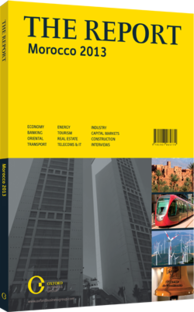Groupe Alliances: Real estate
THE COMPANY: The group’s recent positioning in the low- and middle-end segment has been successful. The strategic choice to promote affordable and mid-range housing, as the demand for golf properties fell sharply, has produced its first results: in 2011, the low- and middle-end segment contributed 65% to consolidated revenues that were up 66% to Dh4.34bn (€515m). Its contribution should remain at similar levels in 2012.
Groupe Alliances was founded in 1994 and floated on the Casablanca Stock Exchange in 2008 by its majority shareholder, Mohammed Alami Nafakh Lazraq. The objective was mainly to diversify its business portfolio and develop the business further. Alliances completed its vertical integration in 2009/10 when it acquired Entreprise Marocaine de Travaux and Somadiaz, two local construction companies. Now Groupe Alliances’ business portfolio consists of five business lines: affordable and mid-range housing; residential real estate and golf resorts; hospitality; construction and public works; and services. The group’s current valuation is far below its intrinsic value. Its value has dropped significantly since the beginning of 2012 due to difficult market conditions and to lower-than-expected results in the first half of 2012. As of December 2012, the stock had a price-to-earnings ratio of 7.0 and to a price-to-book ratio of 1.6, far below average levels for the sector.
DEVELOPMENT STRATEGY: Like its main listed competitors, Groupe Alliances is developing projects all around the country, although these are concentrated in major Moroccan cities, such as Casablanca, Rabat and Marrakech. Groupe Alliances’ affordable and mid-range projects are part of investment commitments with the government, while some new upscale projects were born from strategic opportunities and partnerships with local investors or landowners. In 2011 Alliances delivered 10,600 units, with 9200 units for the affordable and mid-range segment. The acceleration of developments for the affordable and mid-range segment is impressive. As of the end of 2012, 31,000 units were under development, including 23,000 affordable and mid-range units. The outlook for the segment is strong as the housing deficit remains considerable (the housing shortage in Morocco is 800,000 units). Aside from golf resorts, all other segments are performing well and their associated sales have dynamic momentum.
The group has initiated several bond issues and a recent Dh1bn (€88.9m) bond redeemable in shares (BRS). This last BRS issue aims to strengthen the group’s balance sheet and liquidity position as well as provide some new funding to acquire additional land. The acceleration of affordable and mid-range housing developments has increased both the group’s working capital requirements as well as its net debt levels, which previously stood at Dh7.6bn (€676m) and Dh6.1bn (€542m), respectively, in 2011.
Groupe Alliances’ revenues stood at Dh1.91bn (€170m) in the first half of 2012, up 14% year-on-year, and in line with a strong cyclical performance pattern, given the heavy delivery schedule in the second half of the year, mainly in the affordable and mid-range segment. Net profit group share was only up 6% to Dh274m (€24.4m) due to substantial minority interest during the period. Groupe Alliances concluded partnerships with private investors as well as with landowners on some strategic projects. Confidence remains in the group’s ability to complete its 13,000 to 15,000 affordable and mid-range housing units per annum in the short term, as well as 150,000 affordable and mid-range housing units in the next six to seven years. This should generate sustainable free-cash-flows and bring back debt to more reasonable levels.
Meanwhile, the market’s expected upheaval is expected to boost demand in the residential real estate and golf resorts segment, which should in turn create additional value and increase the return on investment for some projects. The group’s strategic diversification combined with its strong positioning on the low-end segment (especially between Casablanca and Rabat, where the vast majority of the demand is located) is expected to maintain a reasonable course of growth.
You have reached the limit of premium articles you can view for free.
Choose from the options below to purchase print or digital editions of our Reports. You can also purchase a website subscription giving you unlimited access to all of our Reports online for 12 months.
If you have already purchased this Report or have a website subscription, please login to continue.

